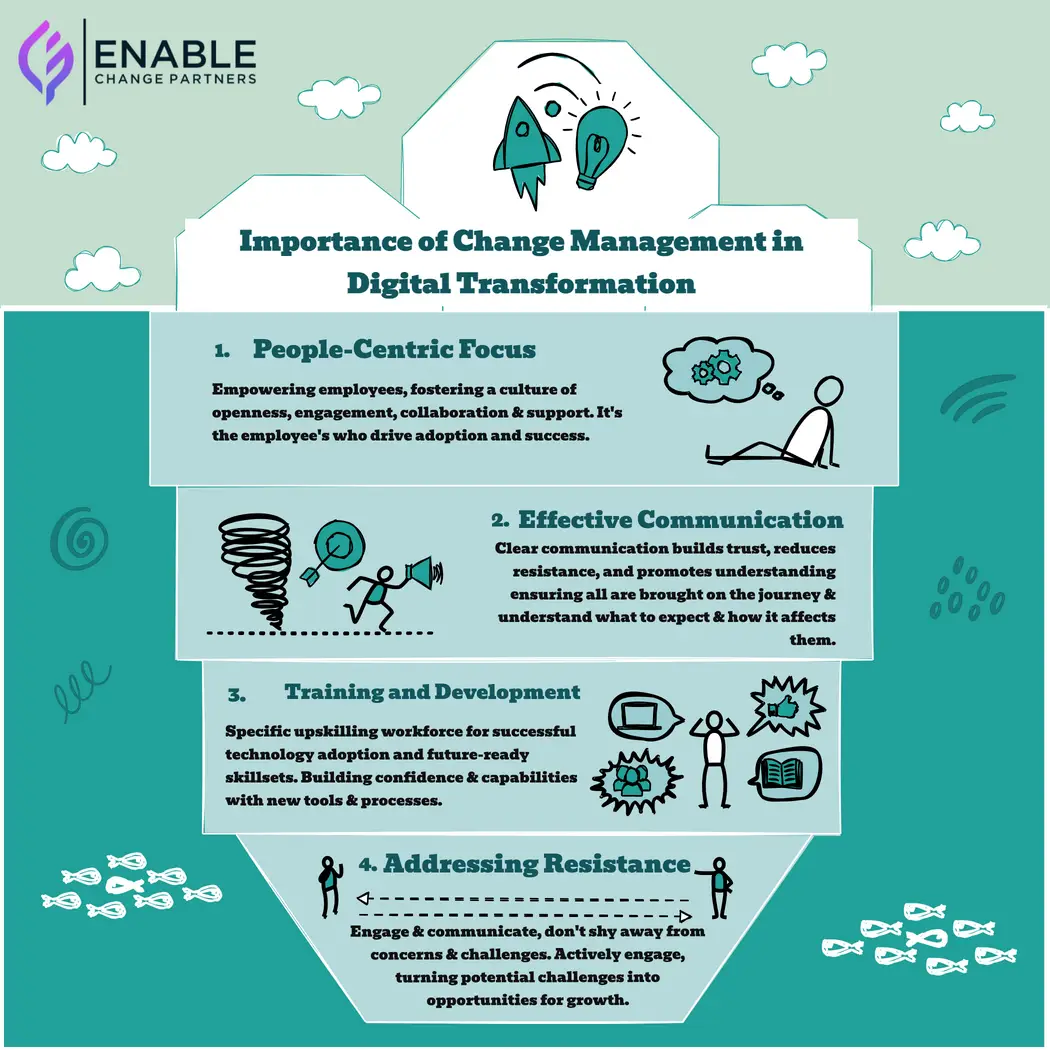In today’s fast-paced world, it often feels like every organisation is undergoing a digital transformation. From small start-ups to large corporations, the race to embrace digital technology is on. But what does this entail, and why is it so essential?
Understanding Digital Transformation
Digital transformation goes beyond adopting new technologies; it fundamentally reshapes how organisations operate and deliver value to their customers. It encompasses various initiatives, such as integrating artificial intelligence, utilising cloud computing, and harnessing data analytics. The main goal? To create an agile, efficient, and customer-focused organisation.
So why is this transformation necessary? The truth is that customer expectations are evolving rapidly. Today’s consumers want seamless interactions, personalised experiences, and instant services. They expect organisations to be quick to adapt and innovative in their approaches. In this landscape, standing still is not an option; organisations must evolve or risk falling behind.
The Vital Role of Change Management
With our extensive experience in change and transformation, We have seen first-hand how crucial change management is for the success of digital initiatives. Many organisations need to pay more attention to the need for a structured approach to change management during these transformations.
Here’s why it really matters:
- People-Centric Focus: At its heart, digital transformation is about people. While technology plays a key role, the employees drive adoption and success. Change management helps create a culture of openness, engagement, and collaboration, ensuring everyone feels supported throughout the transition.
- Effective Communication: Clear communication is vital during any transformation. Change management provides the framework for open dialogue, ensuring that all stakeholders are informed about what to expect, how it affects them, and the benefits it brings. This transparency builds trust and reduces resistance.
- Change Adoption Realisation: Beyond training, it’s essential to measure how well changes are being adopted. Change management frameworks often include strategies for monitoring adoption rates and user satisfaction, allowing organisations to identify areas requiring additional focus or support.
- Managing Business Disruption Risk: Implementing new technologies can disrupt existing workflows and create uncertainty. Proactive change management identifies potential risks associated with business disruption and establishes contingency plans to minimise their impact, ensuring smoother transitions.
- Training and Skill Development: The skills needed to leverage those systems will evolve as organisations roll out new technologies. Change management ensures employees receive the training to build their confidence and competence with the latest tools and processes. Investing in people directly correlates with successful adoption.
- Addressing Resistance: It’s natural for employees to feel resistant to change. Organisations can anticipate and address concerns through structured change management, providing support and resources to help employees overcome their fears. By actively engaging with resistance, you can turn potential challenges into opportunities for growth.
- Measuring Success: Change management allows for evaluating the impact of digital transformation efforts. By setting measurable goals and regularly assessing progress, organisations can identify what is working and needs to be adjusted, ensuring that the transformation remains aligned with strategic objectives.

Ensuring Success in Digital Transformation
In a climate where digital transformation is everywhere, how can organisations ensure they have the right strategies, people, and outcomes for success?
- Define Clear Objectives: Clearly define measurable objectives for your digital transformation. What are you trying to achieve? How will you know if you’ve succeeded? Connecting these objectives with your overall business strategy helps secure buy-in from leadership.
- Engage Employees Early: Involve employees in the transformation from the start. Gather their insights, address concerns, and encourage their participation. By fostering a sense of ownership, you increase engagement and capture valuable perspectives that can shape the transformation.
- Invest in Training and Development: Ensure your employees have the skills and knowledge to thrive in a digital landscape. This could mean upskilling your workforce or bringing in new talent with the requisite expertise. Continuous learning should be part of your organisational culture.
- Foster Collaboration: Break down silos within your organisation. Encourage cross-departmental collaboration to create a more cohesive environment. Digital transformation affects many aspects of the business; collaboration can lead to innovative solutions and a more integrated approach.
- Utilise Data-Driven Insights: Leverage data analytics to guide your strategies. Make decisions based on real-time data rather than assumptions. Understanding customer behaviours and preferences can help tailor your digital services effectively.
- Regularly Review and Adjust: Digital transformation is not a one-off event; it’s an ongoing journey. Periodically evaluate your progress, solicit feedback, and be willing to adjust your strategies as necessary. Flexibility is crucial in navigating the complexities of this process.

Digital transformation is a hot topic but is about much more than technology. It centres on people and the profound shifts in our organisation’s operations. We can survive and thrive in this digital age by embracing a people-focused approach to change management and investing in the right strategies.

